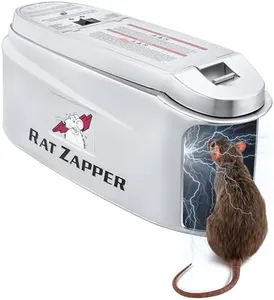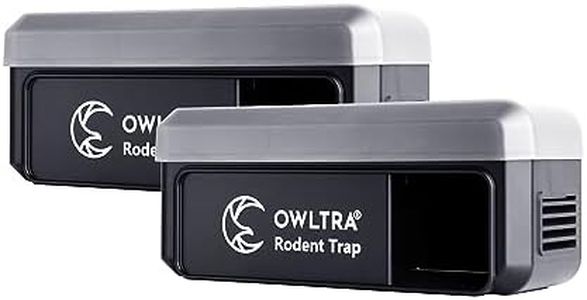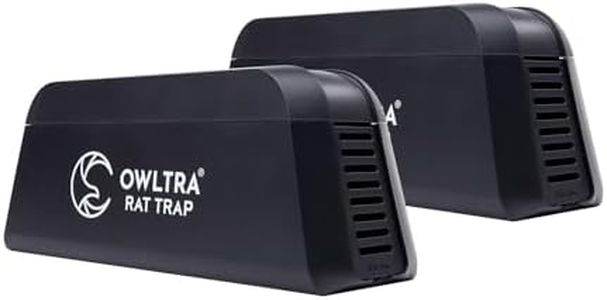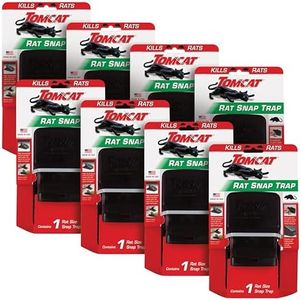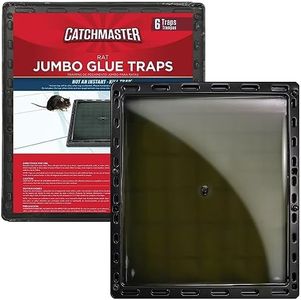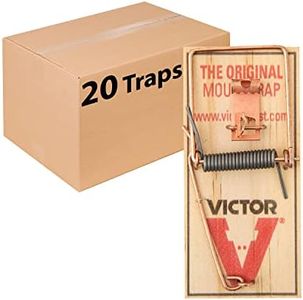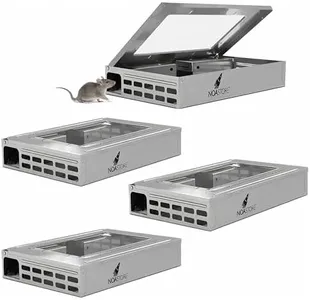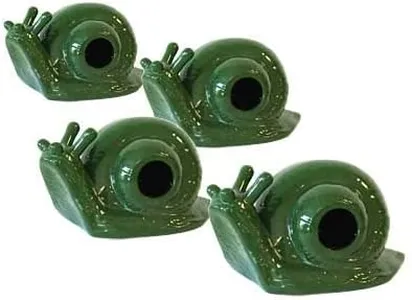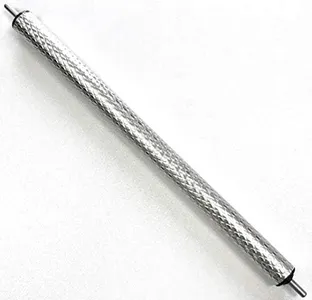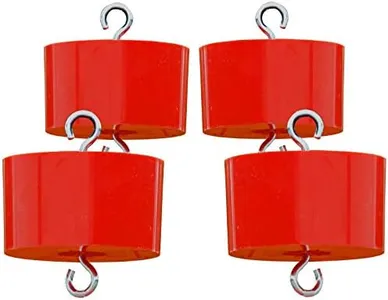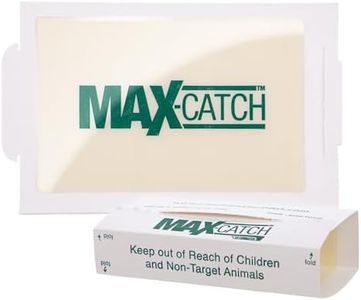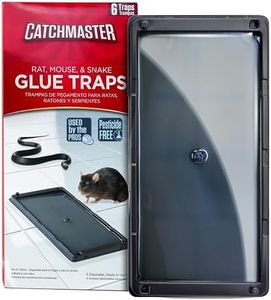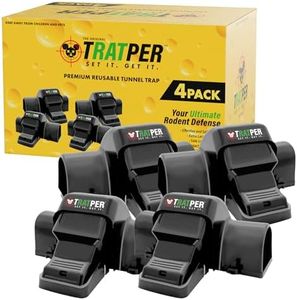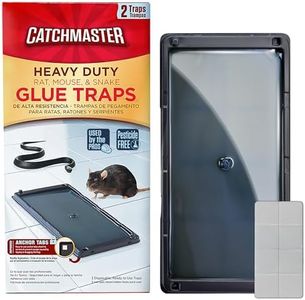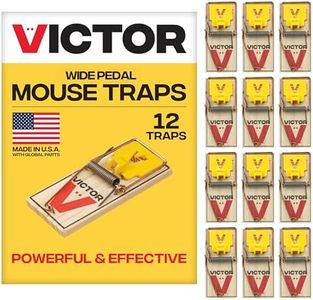10 Best Rat Traps 2025 in the United States
Our technology thoroughly searches through the online shopping world, reviewing hundreds of sites. We then process and analyze this information, updating in real-time to bring you the latest top-rated products. This way, you always get the best and most current options available.

Our Top Picks
Winner
OWLTRA 2 Pack OW-7 in-/Outdoor Electric Rodent Trap, Instant Kill Mouse & Rat Zapper with Waterproof Cover, Sound & Light Alarm, and Batteries or USB Power Source, Waterproof Grade IPX4, Black
Most important from
20684 reviews
The OWLTRA OW-7 is an electric rodent trap designed for both indoor and outdoor use, suitable for catching mice and rats thanks to its larger size. It uses a quick electric zap to kill rodents instantly, which many find more humane than traditional snap traps. You can power it with either 4 D batteries or a USB connection, offering flexibility depending on your setup. It comes with a waterproof cover rated IPX4, which is essential for safe outdoor use, but you must remember to always use this cover outside to protect the electronics. The trap has a sound and light alarm that alerts you when a rodent has been caught, making cleanup more convenient. Baiting is straightforward, with a small compartment where you place attractive foods like peanut butter.
In terms of safety, the side entrance reduces the chance of pets or children accidentally triggering it, but it still requires caution due to the electric shock feature. The trap is reusable and can handle about 60 rodents on fresh batteries before needing replacements, which makes it economical and environmentally friendlier than single-use traps. Cleanup involves removing the dead rodent, which the alarm helps you remember promptly. The size is moderate and should fit comfortably in typical rodent-prone areas, but to be most effective, placement on a clean, dry surface is necessary.
Drawbacks include that batteries are not included, and the USB option requires a continuous power source, which might limit placement options. Some users note that the alarm can be triggered accidentally or may be too quiet in noisy environments. This trap suits anyone looking for a reusable, electric solution that can be used both indoors and outdoors, especially in places where humane and quick rodent control is preferred.
Most important from
20684 reviews
OWLTRA OW-1 Indoor Electric Rat Trap 2PCS, Instant Kill Rodent Zapper with Pet Safe Trigger, Black
Most important from
20684 reviews
The OWLTRA OW-1 Indoor Electric Rat Trap is designed as a humane and effective solution for indoor rodent problems. It uses a quick electric zap to kill rats instantly, avoiding the mess and risks associated with poison. The trap’s dual infrared sensors make it safer around children and pets by activating only when a rodent is inside, which reduces accidental shocks. It’s easy to use with a simple bait area and magnetic lid for no-touch disposal, so you don’t have to handle the dead rodent directly. The trap is reusable and powered by 4 C batteries, which can kill up to 60 rats before needing replacements, making it cost-effective over time. Its size is compact enough to fit discreetly in common rodent hotspots inside the home.
Since it’s an electric trap, it requires battery maintenance and careful placement to avoid exposure to moisture. Some users might find the initial setup or baiting a bit tricky if they are new to this type of device. This product suits those looking for a cleaner, safer alternative to traditional snap traps or poison, especially in homes with pets or children. It is not ideal for outdoor use or very large infestations that might require multiple units.
Most important from
20684 reviews
Tomcat Rat Snap Trap (8 Pack)
Most important from
8835 reviews
The Tomcat Rat Snap Trap is a reusable snap-style trap designed to kill rats quickly and effectively. It features strong, interlocking teeth that make it almost impossible for rats to escape once caught. Made from high-impact plastic and rust-resistant metal, the trap can be used multiple times without wearing out, which helps save money over time. Setting the trap is fairly easy—you can do it by hand or foot—and the removable bait cup allows you to add bait without accidentally triggering the trap, adding a safety layer for users, especially those concerned about snapping their fingers.
The traps are compact enough to place in common rat hiding spots, and the pack comes with eight traps, ideal for covering multiple areas. Since it is a snap trap, careful placement is necessary to avoid accidental contact with children or pets, so safety precautions are important. Cleanup involves handling the dead rat, which some may find unpleasant, but the reusable design means fewer traps need to be discarded. This trap is non-electronic, avoiding the need for batteries or complicated setup, making it a reliable, reusable, and non-toxic option for rat control with moderate ease and good safety features when used properly.
